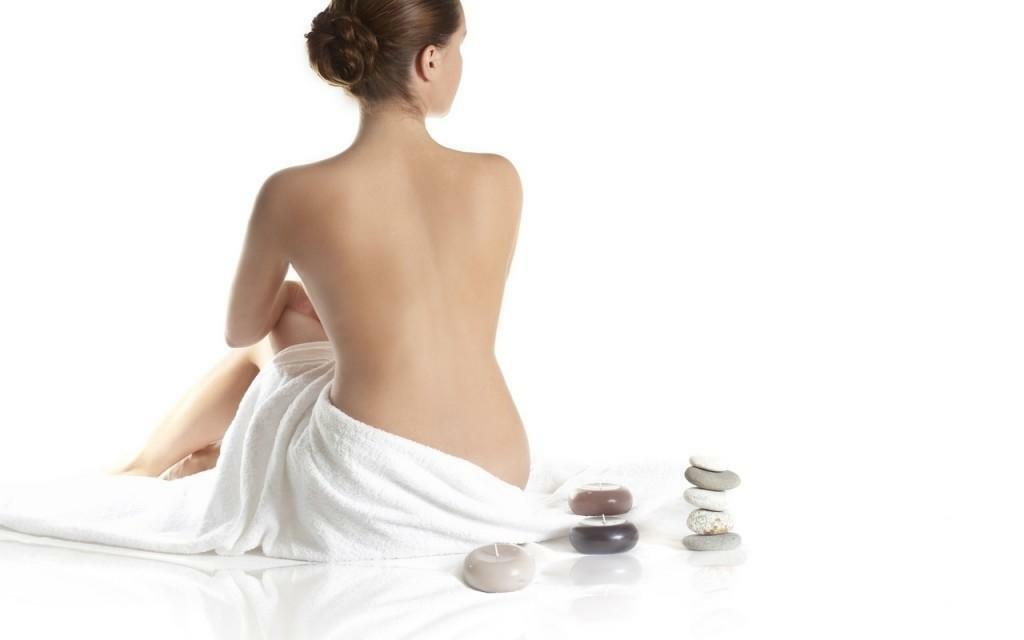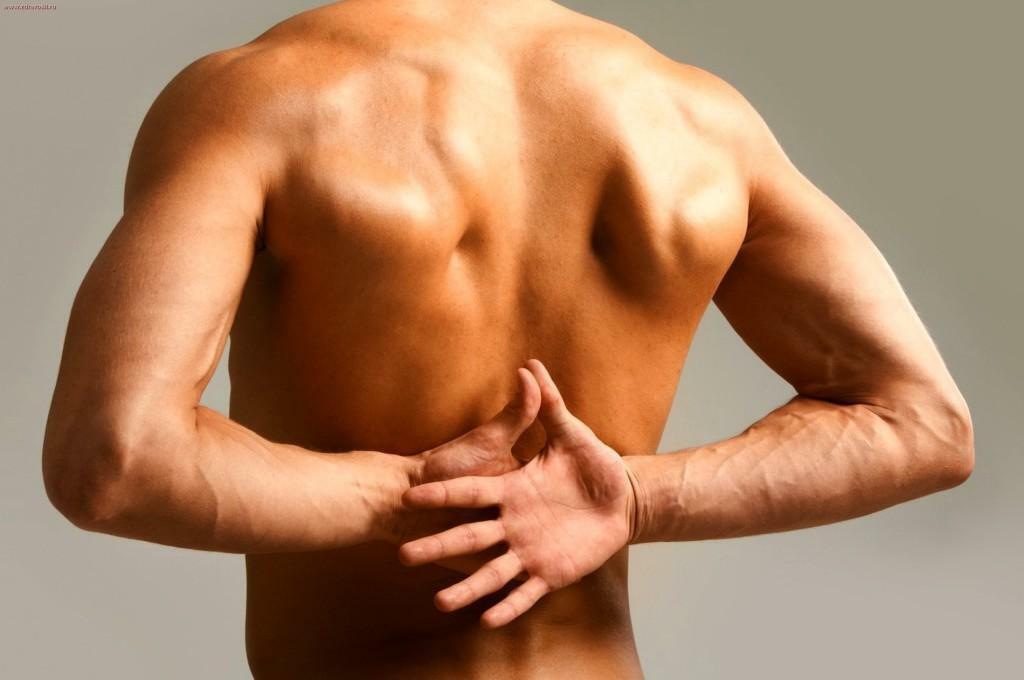To date, many doctors have been armed with the method developed by Dr. SM Bubnovsky( Sergey Mikhailovich called him kinesitherapy) for the treatment of vertebral hernia. Many books have been written about this method, not only by the author, but also by his numerous followers. Another name for this therapeutic technique is adaptive gymnastics.
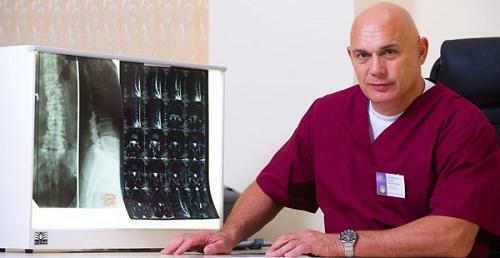
Bubnovsky Sergey Mikhailovich
The essence of the treatment is to combat hypodynamia - one of the main causes of diseases of the spine, in particular, the lumbar spine. Gymnastics includes a lot of exercises of varying degrees of intensity, moreover, the doctor created a special simulator( known as the multifunctional simulator Bubnovsky, or abbreviated MTB), helping in the restoration of muscle tone and spine. Pain after treatment disappears, the functionality of the spine improves. Consider what kinesitherapy is.
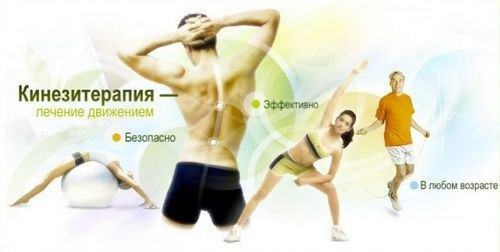
Kinesitherapy from Bubnovsky
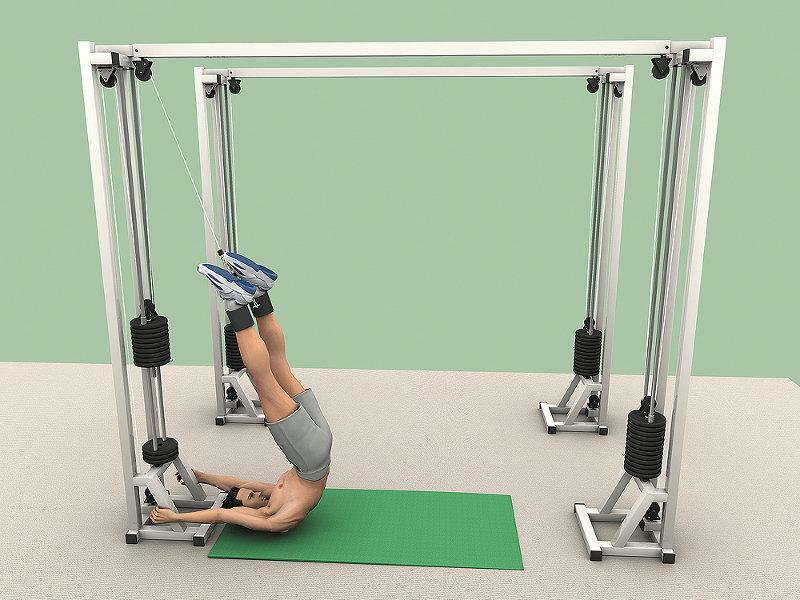
Multifunctional simulator Bubnovsky
Content of the material
- 1 Features of the Bubnovsky method
- 2 Lumbar spine hernia: treatment, exercises Bubnovsky
- 3 Use of the MTB training apparatus
- 3.1 Video - Bubnovsky healing simulator
- 4 How to treat the vertebral hernia in the open air?
- 5 Spina began to hurt on the road - what to do?
- 5.1 Video - Gymnastics of Dr. Bubnovsky
Features of the Bubnovsky
method The treatment of a lumbar hernia using this technique is not only to perform exercises, but also to diagnose the musculoskeletal system that allows the most precise determination of the pathology localization.
As for the exercises themselves, Sergei Mikhailovich developed them personally. They allow you to restore the functionality of the spine and improve the performance of internal organs in general. It is worth adding that the treatment is done out-patient, in the regime that is convenient for the patient.
Hernia of the lumbar spine: treatment, exercises Bubnovsky
As you know, muscle tissue has its own mechanisms to eliminate pain. The essence of the exercises is to "include" these mechanisms.
Exercise # 1
With severe back pain, you need to perform all the movements that the body is capable of. Passivity here is unacceptable. Perhaps the most effective exercise available at home is moving on all fours. With each movement, you need to do "Ha" on inspiration, and the steps should be stretched to the maximum.
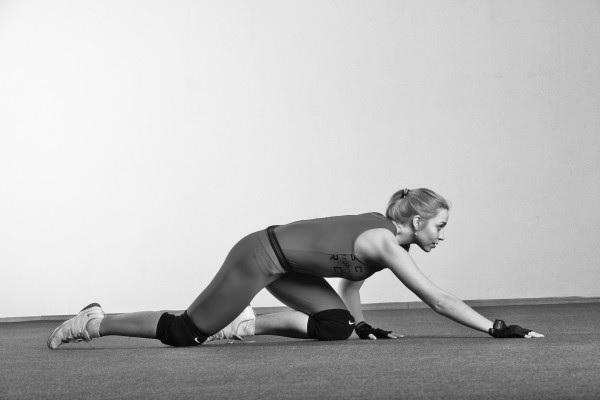
Movement on all fours.
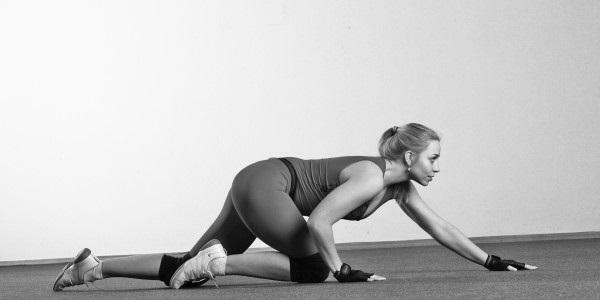
. The first exercise.
. Exercise # 2.
. Also Bubnovsky recommends that patients push-up is a distraction exercise that helps get rid of "sick energy".If you want to press it is possible not only from the floor, but, for example, from the table. Under distracting exercises the author means those that the patient can perform during periods of exacerbation. In this case, peripheral( relative to the localization of pain sensations) joints are used, by means of which "energy" leaves the body. This phenomenon Bubnovsky calls "the rule of the window".
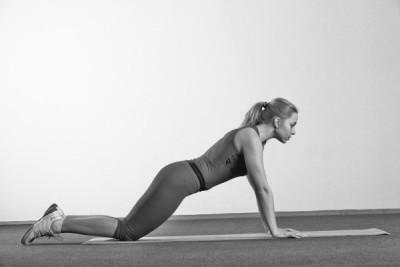
Second exercise
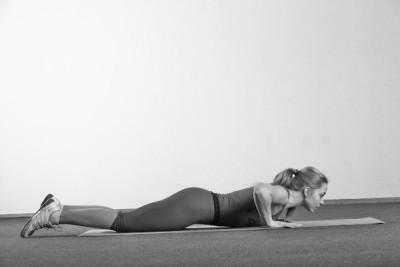
Squeeze from the floor
Exercise 3
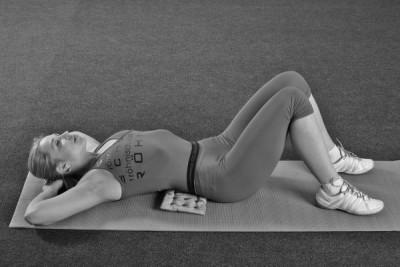
Exercise 3
The patient lies on his back, bends his legs on the floor, hands behind his head( elbows should be pointed in different directions).When exhaling( again, "Ha," but more sharply), a person tries to touch the knees with his elbows, although this is not necessary, since the main thing is that the elbows should be directed to the knees, and the blades break away from the floor surface.
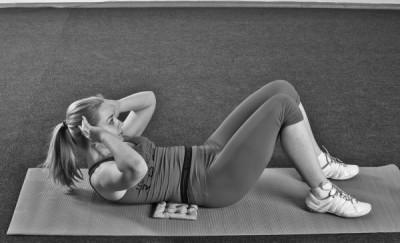
Drawing elbows to the knees
The total number of repetitions should reach 100 times, but you need to do everything in small series( 10x10 or 5x20).If desired, the total number can be increased( Bubnovsky is recommended to do 400 times) until the patient feels a burning sensation in the abdominal muscles. That is characteristic, the chin should be pressed all the time to the chest.
You can alternate the execution of this exercise with one of the previous ones. The main goal is to unlock the muscles. After the pain subsides, you can begin to stretch the extra back muscles( longer and stretching exercises are required).To this end, the patient must lie down on the ice compress and try to reach the right knee with the left elbow, and the right one - up to 15 times( at least) to the left.

Pulling the left elbow to the right knee

And the right elbow to the left knee
Exercise # 4
The man lies on his back, legs bend, and his arms are held along the trunk. On exhalation, he arches and maximizes the pelvis, then descends and the body returns to its initial position.

Starting position
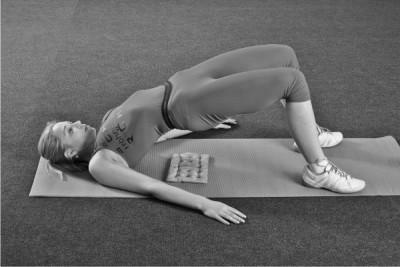
Lifting the basin
Note! Different twists, etc., with a lumbar hernia is not recommended. Only those exercises are allowed that are performed along the center line( later their number will increase).
Sometimes, because of severe pain, even such primitive exercises can not be performed. In such cases, a wet cold sheet, folded by a strip, should be laid on the floor, and, bending the knees, lie on it. Instantaneous results will not give, a gradual reduction in pain will be evidence that the person is moving in the right way.
Using the MTB training apparatus
For the above-mentioned simulator, special exercises were also developed that can quickly restore the muscular framework and cure the hernia of the spine. Consider which of the exercises are for the lumbar hernia.
Video - Therapeutic simulator Bubnovsky
Exercise # 1.Execution of the lower thrust of the
The patient sits on the floor or, as an option, a universal bench facing the MTB and, with a little bent legs, makes the heels point to the "heels" of the MTB.Holding on to the handle, the patient will perform traction from the lower block, parallelly bending backwards when exhaling. In the final position, the back should be straight.

Performing the lower thrust

Executing the exercise
Performing the two exercises( alternately) will help restore blood circulation in the lumbar region and eliminate pain. It is possible that after several repetitions the back muscles will begin to hurt, but this is normal.

Exercise on the universal bench
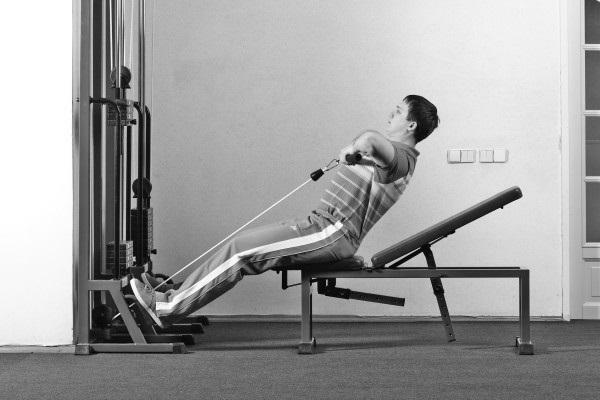
We perform the exercise, as shown in the photo
Exercise # 2.Bicep hip
Opposite the MTB is a universal bench. With one knee, the patient rests on the floor, and the second leg, straight, should lie across the bench. The leg, which is located on the bench, draws from the lower block, with the knee joint bending at maximum as it exhales. Weight for traction is selected in such a way that the number of repetitions is somewhere 13-15 times.
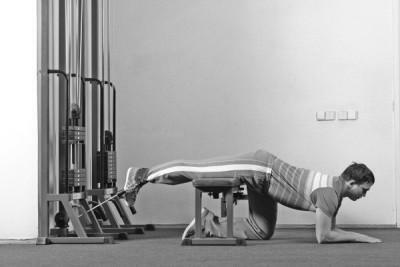
Hip Bicep Exercise

Performing an Exercise for the Hamstrings Bicep
Exercise # 3.Quadriceps femur
The position of the body is the same, but the head should be directed to the simulator. The patient performs the traction of the upper block( always on exhalation) until the leg is fully bent at the knee.
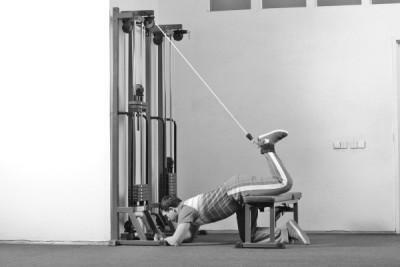
The starting position facing the simulator. Exercise for quadriceps
Exercise # 4.Thrust with straight leg
The patient lies on his back in the same way as in the previous case, and performs a pull with the leg from the upper block. This exercise, as well as the following, should be done 15-20 times.
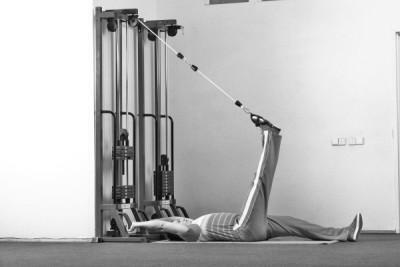
Starting position

Foot mount
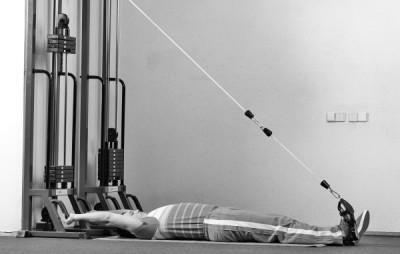
Pull your leg down
Exercise # 5.Use of adductor muscles
The patient lies on his side( the head should be directed towards the simulator) and makes traction from the upper block.
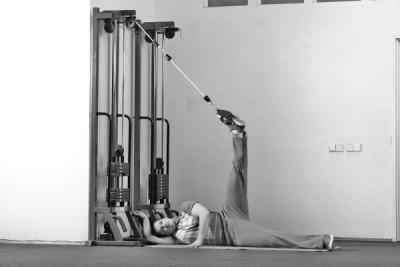
Laying on the side
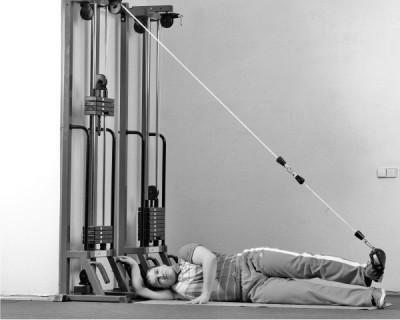
Pulling the foot down
Exercise # 6.Thrust of one knee
Still it is necessary to carry out exercises which unload large joints of legs. Here the patient, standing on his knee, makes traction from the upper block with one foot.

Fastening the foot

Starting position for the exercise

Drawing the knee
Exercise # 7.Thrust of knees
It is intended for unloading of a vertebral department. The patient lies down to the MTB and makes traction from the upper block.
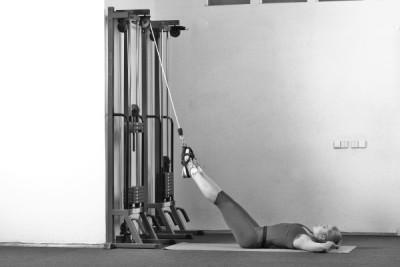
Fixing the foot
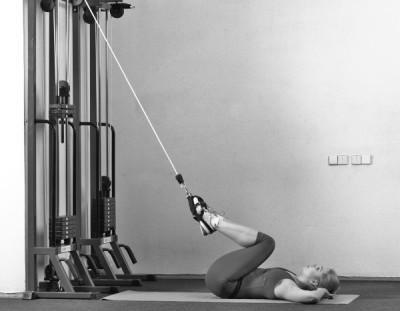
Pulling your knees to yourself
Exercise # 8.Birch
Applies to the same series. The patient lays his head against the MTB, touching the blades and heels of the floor surface, and makes traction from the upper block.
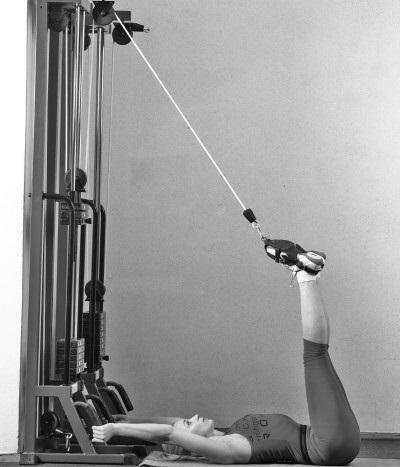
We lay on the floor
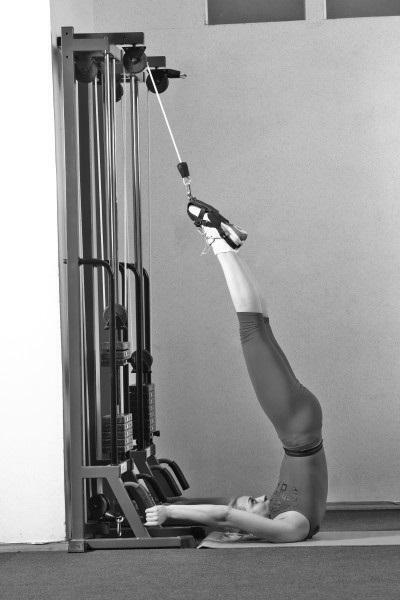
We make the birch
Exercise №9.Plow
Intended for trained patients. Exercise is the same as the previous one, but from the bottom block. The end point is the pelvis touching the floor surface with legs fixed at an angle of 45 degrees.

Starting position
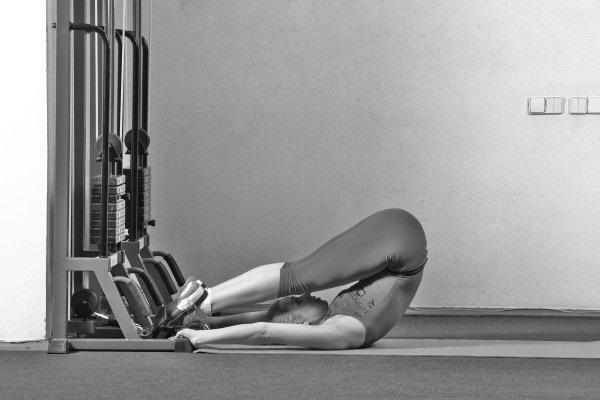
Doing the exercise "Plow"
Exercise # 10.Squatting
Thanks to the performance of this squatting, the thigh bends without any axial load on the spine, which can not be boasted by any other barbell exercise. The illustration of this exercise is shown below.
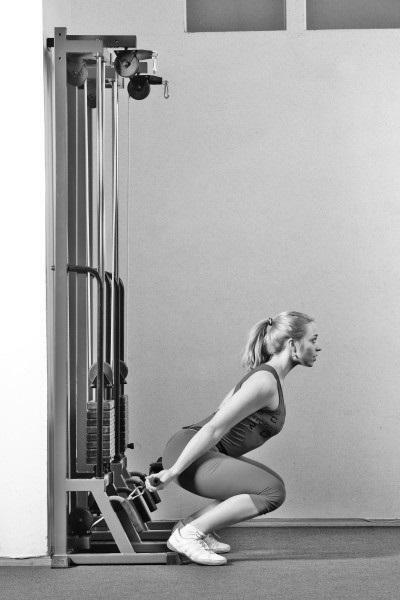
We take the handrails of the simulator

We stand, as shown in the photo
How to treat the vertebral hernia in the open air?
For this, Bubnovsky recommends the use of a horizontal bar, but exclusively prepared for patients. What is typical, ordinary visas here do not help. A person should not only hang, but also raise / lower his legs, which are bent at the knees, and as high as possible and exclusively on exhalation( regardless of pain).
Back started to hurt on the road - what to do?
Bubnovsky, who once participated in the rally "Paris-Dakar", recommends several anesthetic exercises for drivers( primarily for truckers).Every three to four hours a person must leave the car salon, create a firm support for the feet and, holding on to any detail of the car, try to stretch the lower limbs and spine, ie make a "folding knife"( straighten legs / hands, trunk maximallybends, the pelvis descends as low as possible on a long exhalation "X-x-a-a").

Correct position of the body
Then the person straightens, puts his feet wider than his shoulders and turns the body to his leg( any).Then he gently bends forward( at this time the hands should move down the leg) and tries to touch the ground with his hands. You do not need to bend your leg.
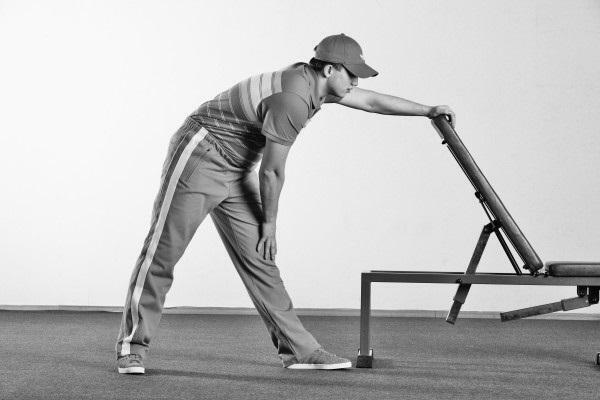
Turning the body

Drawing a hand to the ground
Such exercises( decompression, as the author himself calls them) will help to eliminate back pain. But it is worth noting that all of them( i.e., exercises) are painful, and the worse the back condition, the more difficult it is to perform them.
As a result, we note that after the exercises the author of the technique recommends visiting a Russian bath - this will help in eliminating pain. But before the entrance, according to tradition, it is necessary to cool down, and after the exit - to plunge into the icy water.


